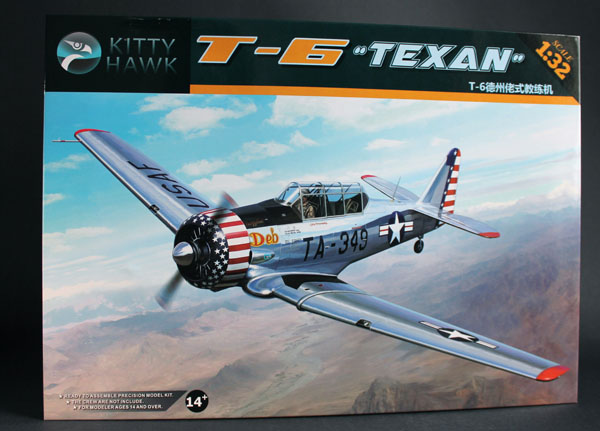
Kit ref: KH32001
Price around: £51.00 GBP (April 2014)
Review by Max Williams
References:
- The Harvard File, Air-Britain publication compiled by John F Hamlin 1988
- Britain’s Military Training Aircraft published by Haynes written by Ray Sturtivant 1987
- T-6 Texan The Immortal Pilot Trainer by William Jesse
Background notes
The imminence of war and the anticipated need for a modern advanced trainer saw a stop-gap order being placed for the North-American BC-1, a sturdy machine already in use with the US Army Air Corps, whilst the de Havilland Don was being developed. However this latter aircraft proved to be a failure, its place in the RAF being taken by the Miles Master. The initial order of 200 Texans placed with the North-American company saw deliveries commence in December 1938, the aircraft being known in the RAF as the Harvard. It became a very successful trainer such that it long outlasted the Miles Master, despite some inherent drawbacks such as very poor visibility from the forward cockpit and even less from the rear where the hapless instructor was seated! Although a very strong machine, it was not a particularly forgiving aircraft to fly especially in the initial stages when trainees had recently graduated from the Tiger Moth. It could flick suddenly without warning and flick stall if looped too fast. Landings could be tricky if the tail was held too high and even when the tail had come down it could easily ground loop. The attrition rate at SFTS’s (Service Flying Training Schools) with Harvards was high! Nonetheless, its big advantage was that although it was a large stride for the trainee pilot from the Tiger Moth, it was a little step forward onto operational fighters so it fulfilled its role as an advanced trainer extremely well.
There were broadly three differing marks of Harvard:
The Mk I construction was steel tubing and fabric covering, the engine being the Pratt and Whitney Wasp R-1340 nine cylinder air-cooled engine driving a Hamilton constant speed metal airscrew. The Mk Is. stationed at SFTSs in the UK were withdrawn in 1940/1 because of the threat of enemy action against inexperienced trainee pilots and the vagaries of British weather and were sent mainly to Southern Rhodesia.
The Mk II varied in having an uprated engine driving a two-position controllable pitch metal airscrew, the rear fuselage being of steel tube monocoque design and light alloy covered.
The Mk IIa was re-designed to eliminate the use of aluminium alloy and high alloy steel to overcome possible wartime shortages of these materials. Consequently the wings, centre-section, fin, rudder, elevators, ailerons, flaps etc were made of spot-welded low alloy steel. The side panels of the forward fuselage and the entire rear fuselage, tailplane etc were covered with plywood.
The Mk IIb had a stressed metal skin with fabric-covered control surfaces, the P&W engine now driving a constant speed airscrew, it was the most prolific Harvard in RAF service. The Mk III differed from the Mk IIb only in its electrical system which was now 24-volt.